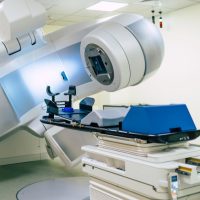This new study looked at data from almost 24 million cancer patients collected from US cancer registries over a 20-year period, beginning in 2000. The research team sorted the data according to cancer type, sex and birth cohort – in other words, the five-year period during which they’d been born. They also carried out a statistical adjustment to take into account the fact that, for everyone, the older you get the more likely you are to develop cancer.
By analysing rates of the 34 most commonly occurring cancers (those which had at least 200,000 cases over the two decades) the study provides the most definitive evidence yet for a changing picture of how many people are getting cancer – and when and why they’re getting it.
Shockingly, 17 different cancers are becoming increasingly common in the younger cohorts analysed. For example, people born in 1990 were between two and three times more likely to develop cancers of the small intestine, thyroid, kidney and pancreas than those born in 1955. They also found that people born more recently are getting cancer at a younger age. Across all ages and all cancers, the most dramatic increases in cancer were those of the pancreas and small intestine in the under-30s.
In some cases, such as with bowel cancer, the increased incidence in younger generations has even reversed a previous trend of decline seen in previous generations – suggesting that previous public health gains are now being lost.
Lifestyle and behaviour changes
So, what’s going on? Why are gen X and millenials more likely to get certain types of cancer than their parents’ and grandparents’ generations? The answer probably lies in changing lifestyles and behaviour.
Poor diet and increasingly sedentary behaviour are two probable culprits.
Ten of the 17 cancers identified, such as bowel and breast cancer, have been associated with obesity. The US, like many other countries, is experiencing an obesity epidemic, with rates increasing year on year. There’s growing evidence to suggest that obesity in childhood or early adulthood can increase the risk of some cancers. A related factor that is likely to be important is the increase in consumption of ultra-processed foods. These have been linked with increased likelihood of developing cancer.
Increased binge drinking, particularly in millenial women, was highlighted by the study’s authors as a cause of the increased rates of liver and oesophageal cancers seen among this specific cohort.
Meanwhile in men, they noted a U-shaped trend (meaning rates declined after an initial peak, then began rising again) for Kaposi’s sarcoma and anal cancer – two cancers associated with HIV infection. After a period of declining rates, this trend was reversed for cohorts born from the mid-1970s onwards. This mirrors the recent resurgence in HIV infection rates in the US.
Infection with human papillomavirus (HPV) – a sexually transmitted virus known to cause cervical cancer – may also be a factor in the increase in anal cancer rates. It’s estimated that 90% of anal cancers are caused by HPV infection.
Interestingly, in contrast to the trend seen for anal cancer in men, the study observed a sharp decrease in cervical cancer risk for women born in the 1990 birth cohort – the first to have been vaccinated against HPV. When HPV vaccines were first rolled out they were only provided to girls, meaning that young men in this generation will not have been protected.
While some of the changes the researchers observed in cancer rates can be attributed to generational shifts in lifestyles and behaviours with known links to cancer, they can’t account for all the changes they saw – such as increases in leukaemia. The authors note that more work needs to be done to understand the causes of cancers. Without fully knowing why these cancers are becoming more common, it will be difficult to take appropriate steps to reverse these trends.
The picture isn’t uniformly gloomy though. Some cancers are actually becoming less common in younger generations. The study showed a steady decline in the risk of developing lung cancer for successive generations. People born in 1990 are five times less likely to develop the disease versus those born in 1955. Similar progress is also beginning to be seen for melanoma, where people born in 1990 were less at risk than every other cohort born in the preceding 50 years.
These trends reflect the success of public health campaigns aimed at discouraging tobacco use and encouraging sun-safe behaviour. They highlight how changing behaviour and making healthier choices can reduce our risk of getting cancer.![]()
Sarah Allinson, Professor, Department of Biomedical and Life Sciences, Lancaster University
This article is republished from The Conversation under a Creative Commons license. Read the original article.






















